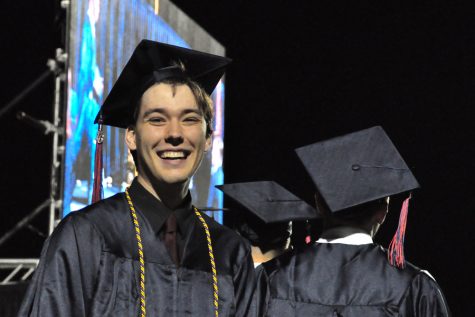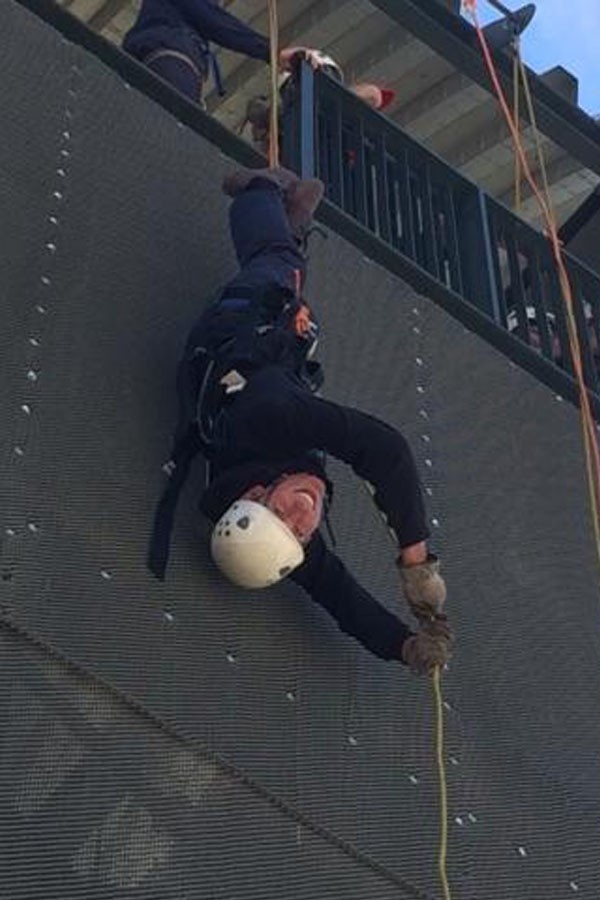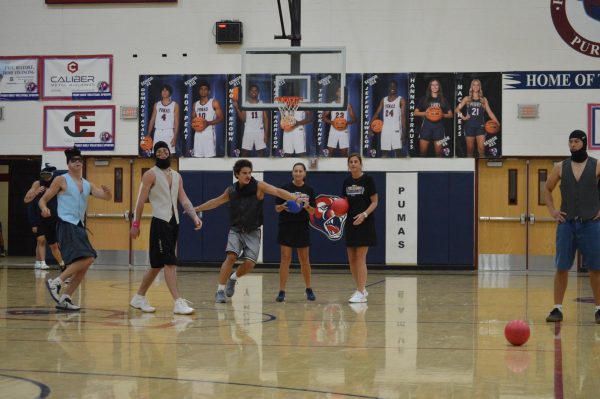EVIT takes students to new heights
It is a question every teacher hates and every student repeats: “When are we ever going to use this?”
For students participating in the high school programs offered by the East Valley Institute of Technology (EVIT), that question has an answer: right now.
The Mesa technical school provides programs for ten Valley school districts that include cosmetology, law enforcement, welding, and auto tech–to name a few.
Two EVIT programs are taking students to new heights in rather literal ways: fire science and aviation.
Rappelling 70 feet down a building is not a typical high school experience. But it is what Juniors Matthew Jones and Olivia Padia did for the first time last week as part of their fire science training. The class is designed to help students “prepare for employment in the firefighting field,” according to the course description on the school’s website, and features “live fire training, search and rescue, high rise tower drills, and the operation of fire apparatus and equipment.”
“EVIT in general is just really cool because you get to focus on your career,” says Jones,”I’ve always been interested in firefighting, so it was an obvious choice.”
Jones will not have to be merely interested in firefighting for much longer. He plans to work as a reserve firefighter during his senior year and EVIT certifications will get him there.
“They have a wildland [certification]…which I already got,” says Padia, who plans to use it to fight forest fires while attending college. “We can also do a national certificate, once you graduate and I think they’re offering a hazmat class soon.”
Jones hopes to become emergency medical technician (EMT) for a fire department and also recognizes the edge EVIT gives him.
“We get basic EMT knowledge,” says Jones. “Not very many people pass that class, like, 90% dropout.”
Meanwhile, the aviation program is one of only four high school-level flight training schools in the nation. The two-year course starts with the basic aviation knowledge needed to pass ground school, than letting students specialize in piloting, mechanics, or drone piloting.
Junior Adam Fennich highlights the “the sheer knowledge you can obtain in a program like this” as the most rewarding aspect of EVIT’s aviation classes. “When you fly,” he continues, “you can’t just know how to fly: you have to know what you’re flying… [EVIT] sets you up perfectly for it.”
“It gives us a two to three year advantage to kids who are just starting out in college,” says Senior Tyler Myers, who plans on flying for commercial airlines after college. “And on top of that, the airlines are having a shortage right now of pilots. So, basically, we’re guaranteed a job right out of college.”
Those jobs are not just available, but lucrative: four of Myers’ classmates are on track to fly Army drones straight out of high school for forty dollars an hour, while airline captains can make up to $300,000 a year for eight to eight flights a month–an average of just under $36 grand per flight.
“EVIT,” says Fennich, “gets a lot of people through that mental barrier of what to do next, what they’re going to do, how they’re going to prepare for college and careers. And honestly, this is the answer to that question.” He plans to follow up his training with an ASU degree in Earth and Space Exploration, a stint flying for the Navy, and–hopefully–a career as an astronaut after that.
There is an assumption, as false as it is common, that a technical education is worth less than “book smarts” (whatever those are). For students at EVIT, that stereotype could not be any more ridiculous: they have found an efficient career path that makes the system work for them–and their dreams.

Nathan Tucker is a senior and News Editor for The Precedent. This is his second year as a member of the editorial staff, where he was previously Arts and...



